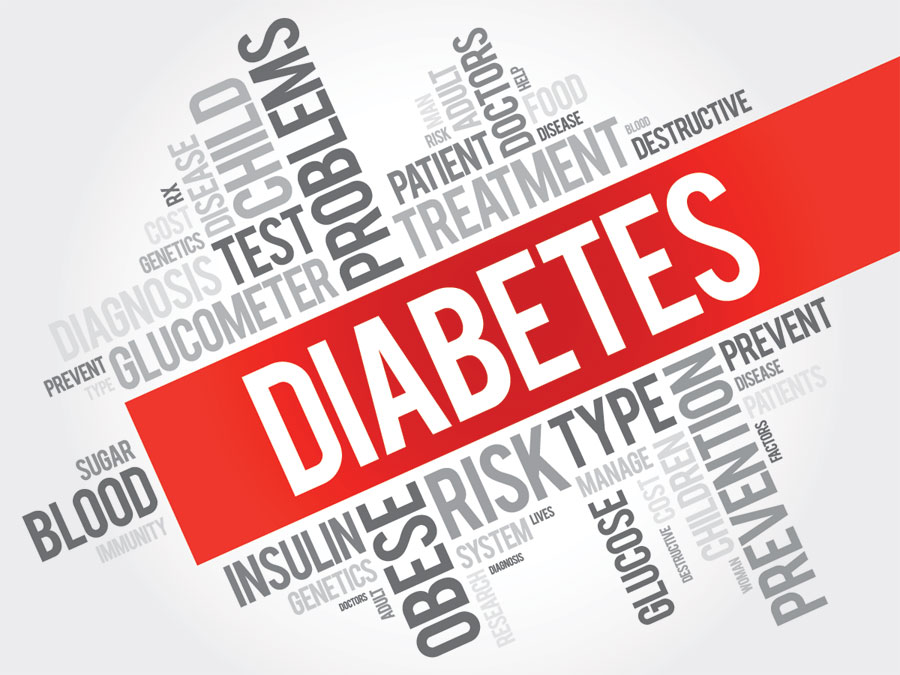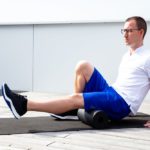Diabetes is a metabolic disorder that affects the body’s ability to produce or use insulin. Insulin is the key hormone responsible for moving glucose from the bloodstream into the muscles. Type 2 diabetes is responsible for 90-95% of all cases currently recognized. Diabetes is the seventh leading cause of death in the USA. Learn how exercise can improve insulin effectiveness, along with suggestions on how to design a program for diabetics. Diabetes Mellitus is a group of metabolic illnesses that are collectively characterised as hyperglycemia. Hyperglycemia is a condition characterized by elevated blood glucose levels attributed to a defect in insulin production or insulin recognition by the cells. Although most cases are either type 1 or 2, there are four types of diabetes based on their etiologic reasons (1).
Sort 1 diabetes is caused by factors such as our own autoimmune destruction or genetic variation or inherited gene. It accounts for approximately 5-10% of all cases (2). Type 1 diabetics are more likely to develop ketoacidosis (a potentially life-threatening condition) if they rely on exogenous insulin. Ketoacidosis, a metabolic condition caused by insufficient ketone control (i.e. extreme accumulation), lowers the pH of the blood. It is the result of a buildup of incompletely-metabolized amino acids or fatty acids due to an absence of carbohydrates that would normally be needed to metabolize them as gas.
Type 2 diabetes is caused by a gradual loss of pancreatic secretion or a rise of insulin resistance at the cell level. It accounts for 90-95% of all cases. There are many causes, and they are often unknown. However, dietary choices (e.g. sugar), inactivity, and obesity, especially extreme abdominal fat, have been proven to be triggers. Some type 2 diabetics may have exogenous Insulin.
The condition of gestational diabetes is one that approximately 9-10% of pregnant women develop around the 24th week. This occurs because hormonal levels are altered to help fetal growth, which interferes with insulin function. Mom is unable provide sufficient insulin to promote regular glucose uptake in the cells. She therefore relies on exogenous insulin. This situation is corrected for many women postpartum.
Diabetes due to different specific origins (e.g. drug-induced, environmental toxicities) – Given the idiopathic nature of some diabetes cases, some causes remain unexplained, and are attributed to chance events.
The prevalence of diabetes in seniors aged 65 and older is high, at 25.9% of that age group (11.8 million individuals). Recent efforts to improve screening, early detection, and prevention have reduced the number of new cases every year, from 1.9 millions (2010) to under 1.7 million (2012). Unfortunately, this disease is prevalent in seniors over 65 years old. This age group has 11,8 million people. With the Child Boomers continuing to grow, this issue will continue to increase. Prediabetes is a condition where blood sugar levels are higher than normal but not high enough to diagnose diabetes. It also explains those who may have little or no ability to secrete/supply insulin but do not have a genetic variant or autoimmune antibodies against the beta-cells in the pancreas. Prediabetes (also known as impaired glucose tolerance or impaired fasting glucose), is a condition that increases the risk of developing diabetes and other heart conditions. This condition is estimated to affect 86 million people aged 20 and over, and this number has risen from 79 million in 2010.
Well being Danger Screening:
A comprehensive well being risk evaluation (HRA), which includes a screening for pre-diabetes and diabetes, is important to guard towards potential harm. According to the American Faculty of Sports Medicine (ACSM) disease threat stratification standards, any individual with an earlier diagnosis of diabetes will be categorised as a high-risk particular person. (High threat = person with a medically diagnosed cardiac, respiratory, metabolic, or renal illness. The threat category does not apply to individuals with prediabetes, who may only be classified as an average threat. Prior to beginning any program of moderate or vigorous intensity, people with a high threat level must undergo a medical exam and receive clearance from their doctor.
The reasonable-intensity range is 40-59% VO2R, or 3 to 5.9 meters*
The intensity of the workout should be >= 60% VO2R (or >= 6 Mets).
- VO2R, or %VO2 Reserving is defined as the distinction between resting VO2 and maximum VO2. It correlates better with % Heart Charge Reserve (%HRR), which is thought of a more correct and appropriate predictor for train depth than % Maximum Coronary heart Rate (%MHR).
** One MET is defined as the amount of oxygen consumed while sitting at a true rest. This is equal to 3.5 ml per kilogram body weight per minute (3.5mL/Kg/min).
Prior to beginning any program of moderate or intense intensity, high-risk individuals should also undergo supervised training testing. The term’supervised’ refers to the administration of tests by a well-being care professional who is not a physician and has expertise in scientific exercise testing, but works under the supervision of an authorized practitioner (e.g. a doctor). ACSM also released additional suggestions in 2014 that anyone with diabetes who meets the following criteria, regardless of how well their condition is managed, should undergo train testing before beginning any physical exercise.
If you are over 35 and 12 months old,
Diagnosis for type 2 diabetes over 10 years.
Diagnosis for type 1 diabetes over 15 years.
Elevated complete LDL cholesterol > 240mg/L (6.62mmol) or
Elevated diastolic or systolic pressure > 90 mmHg, or
Present smoking, or
Family history of coronary artery disease in a first-degree relative (father or mother, brother, sister and son, daughter),
Microvascular disease is a condition that can be present in the presence of other diseases.
Autonomic neuropathy.
Prediabetes does not pose a high risk, but could be a moderate threat depending on other factors (e.g. blood pressure, lipid profile). The individual can initiate a moderate intensity training program without a medical exam and can do so with no test. Before beginning any intense-intensity training program, the individual must undergo a medical exam.
Prognosis:
Table 1-1 below outlines the various methods used to detect diabetes and prediabetes. Fasting blood glucose is still the most popular diagnostic tool, but it has limitations. It only represents a time stamp of one day. The Glycosylated Hemoglobin (HbA1C), a form of hemoglobin, is a newer measure that shows the average blood glucose concentration over a long-term period (i.e. 2 to 3 months). The prolonged periods of high blood glucose can lead to higher amounts binding with hemoglobin molecule, which could be the cause for many harmful health events like diabetes, irritation, kidney and cardiovascular disease (nephropathy), as well as retinal eye damage (retinopathy). HbA1c levels below 5.7% are considered healthy; scores between 5.7-6.4% indicate a greater risk of developing diabetes, while scores above 6.5% are indicative of diabetes (1). A diabetic’s first goal is to keep HbA1C levels below 7%. Some health consultants believe HbA1C to be a more accurate diagnostic tool because it measures sustained blood sugar levels.
Desk 1-1: Diagnostic blood glucose ranges for prediabetes and diabetes
Standing
Fasting (8-hours) Blood Glucose Wholesome scores Less than 100 mg/dL (5.55 mmol/L or less) Prediabetes* 100 – 125 mmol/L (6.94 – 7.94 mmol/L or more) Diabetes** Greater than 125 mmol/l (higher 6.94 mmol/L).
- Also recognized using an oral glucose tolerability test (OGTT), where the 2-hour impaired glucose intolerance rating ranges from 140-199 mg/dL.
** Also recognized using an oral glucose tolerability test (OGTT), where the 2-hour impaired glucose tolerability rating is equal or greater than 200 mg/dL.
Train Programming
A structured lifestyle program is required to manage diabetes effectively. This includes education, dietary modifications, and regular physical exercise. It is also important to aim for an initial weight loss of 5 to 7 % in sort 2 diabetics (as weight issues is a significant issue). Exercise improves insulin sensitivity, glucose tolerance and uptake in people with type 2 diabetes and prediabetes. It also lowers HbA1C levels. Common bodily exercise for sort 1 or any type 2 diabetics who require insulin does not positively impact pancreatic function, but it does reduce the amount of exogenous (external) insulin needed.
The following FITT guidelines (1, 2) should be followed by health and well-being professionals when programming for people with diabetes and prediabetes:
Frequency is important to improve insulin sensitivity. These people should aim to exercise 3-7 days per week. The American Diabetes Association (ADA) suggests cardio exercise at least five days a week. This helps to clarify that higher frequency is necessary (i.e. increased insulin sensitivity equals greater frequency). Do not exceed 48 hours in between each exercise session. Many type 2 diabetics may be deconditioned or obese and struggle to complete exercise 5 to 7 times per week. In order to achieve this, health practitioners should implement a systematic and manageable plan that matches their clients’ lifestyles and abilities.
Depth: A moderate-intensity program may be more suitable for this group, especially for overweight or obese people. ACSM recommends that you start with intensities of 40-59% VO2R or RPEs between 11-13 (Borg scale 6-20) to represent moderate intensity (1). They advocate a gradual increase in the intensity of exercise, especially if weight loss is your goal. The ADA defines moderate-to vigorous intensities as levels where you can speak but not sing. Intense exercise is defined as a level the place you are only able to communicate in short phrases before needing to pause for a breath. However, newer research using higher-intensity, lower-volume exercise like HIIT training also shows improvements in diabetic patients (7). Gibala and his colleagues asked their subjects to perform 10 sprints lasting 60 seconds each at 90% of the maximal heart rate they measured, followed by 60s rest between intervals. The protocol was followed three times per week for two weeks with positive outcomes. It is important that professionals always remember to only train high-risk individuals under the correct medical supervision.
ACSM recommends that you accumulate 150 minutes per week of moderate intensity exercise. Each bout should last at least 10 minutes. ADA also recommends a total of 150 minutes per week. However, it suggests that this should be spread over a minimum of three days each week (2). The benefits are considered to be dose related, meaning that that a greater accumulation of time will give you more health benefits. This is more relevant to type 2 diabetics who want to improve insulin sensitivity than to those with type 1 diabetes. As Gibala and his colleagues demonstrated in their research, a lower volume, higher intensity (i.e. 30-minutes at intervals each week) is effective.
Sort: The standard recommendation is to do a steady and rhythmic exercise, like cardio, that focuses on the larger muscle groups, as this improves insulin sensitivity. However, newer research also supports interval actions (e.g. dash intervals or resistance coaching). It is only advisable to use resistance coaching if there are no contraindications. neuropathies). It is recommended that resistance training be performed at least twice a week. Any format which can simultaneously present cardiorespiratory overload (e.g. circuit-style format) should be used. A combination of cardio and resistance training can be very beneficial for diabetic patients. The person could do 10 minutes of moderate intensity cardio followed by a 5- to 10-minute resistance training circuit. They would then repeat this cycle throughout their entire session. If you train less than three times per week, the resistance training program should focus on 8-10 major muscle groups in circuit format, or become more regionalized by grouping muscles or body segments.
Special Issues
The risk of hypoglycemia during training is high, especially for those who are taking insulin or other oral hypoglycemic agents that increase insulin secretion. This increases the amount of glucose entering cells. A blood glucose level below 70 mg/dL is considered hypoglycemia. Hypoglycemia is characterized by shakiness and dizziness. It can also cause headaches, mood or habit changes, tingling in the mouth and fingers, mental confusion and clumsiness. They should monitor their blood sugar before and after exercise. The physician may suggest that the patient adjust their training schedule, exercise under supervision or with a partner, reduce insulin dosages or even disconnect insulin pumps. It is also recommended to increase carbohydrate intake before exercise in order to prevent hypoglycemia during and after training, as well as keeping a small supply of high-glycemic food close at hand (8). If blood sugar levels must be quickly raised, recommend consuming 15 to 20 grams of high-glycemic carbohydrate or sugar meals (e.g. sports drinks, sweets).
Hyperglycemia is a concern for those who don’t have a glycemic control plan or medication. It is not common for healthy people to experience this due to hormonally-mediated reactions, but it can be a problem in diabetics. The signs include polyuria, fatigue, weakness, extreme dryness of mouth, increased thirst, and acetone breath due to ketone buildup in the blood. Insufficient glucose (i.e. elevated glucose levels in this case) is available to the cells, which causes incompletely metabolized amino acids and fatty acids to accumulate. This increases ketone body ranges. If not metabolized, these fatty acids and amino acids will eventually convert into acetone. Acetone in the blood then passes through to sweat, breath, and urine producing a sweet-fruity scent. A simple urine strip test can be used to monitor ketone levels via urine. Exercise usually lowers blood sugar levels, but if glucose levels are above 240mg/dl before exercise, the urine ketone level should be checked. If present, contact your healthcare provider immediately.
Hyperglycemia can cause dehydration due to polyuria. They should be considered to be at high risk for heat-related illnesses and dehydration. Always monitor any signs of heat-related illness. Hyperglycemics should hydrate before, during and after exercise (rehydration).
If a diabetic with retinopathy engages in vigorous exercise, their systolic pressure and mean arterial pressure will increase significantly (1). The risk can be reduced by using exercise programs that cause a smaller increase in blood pressure (e.g. moderate-intensity training and avoiding extreme high body resistance training).
Certain forms of exercise (e.g. running, walking and standing) may exacerbate foot problems like blisters and wounds in people with peripheral neuropathies. Correct foot care is an important preventative method and includes concepts such as:
Utilizing softer shoe inserts.
Change socks as needed during an exercise.
Include extra weight-bearing actions.
Closed Feedback
Diabetes is a serious metabolic disease that should be monitored by medical professionals. However, due to its increasing prevalence, health professionals are now required to become a part this continuum of healthcare. Although the benefits of exercise in managing diabetes have been established, health professionals must carefully develop and implement programs as there are many factors that can have serious consequences. To ensure that you are providing the best possible care for your client, it is important to understand the nature of their illness. Follow all the instructions and advice given by their doctor.











